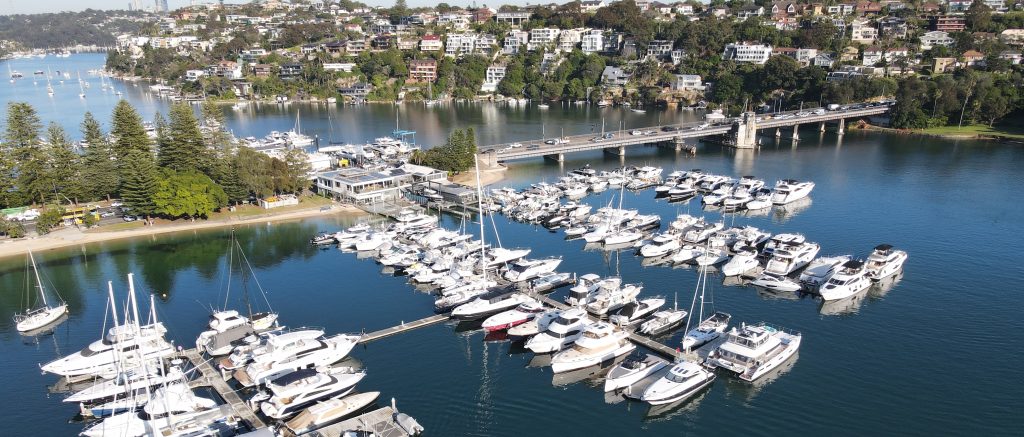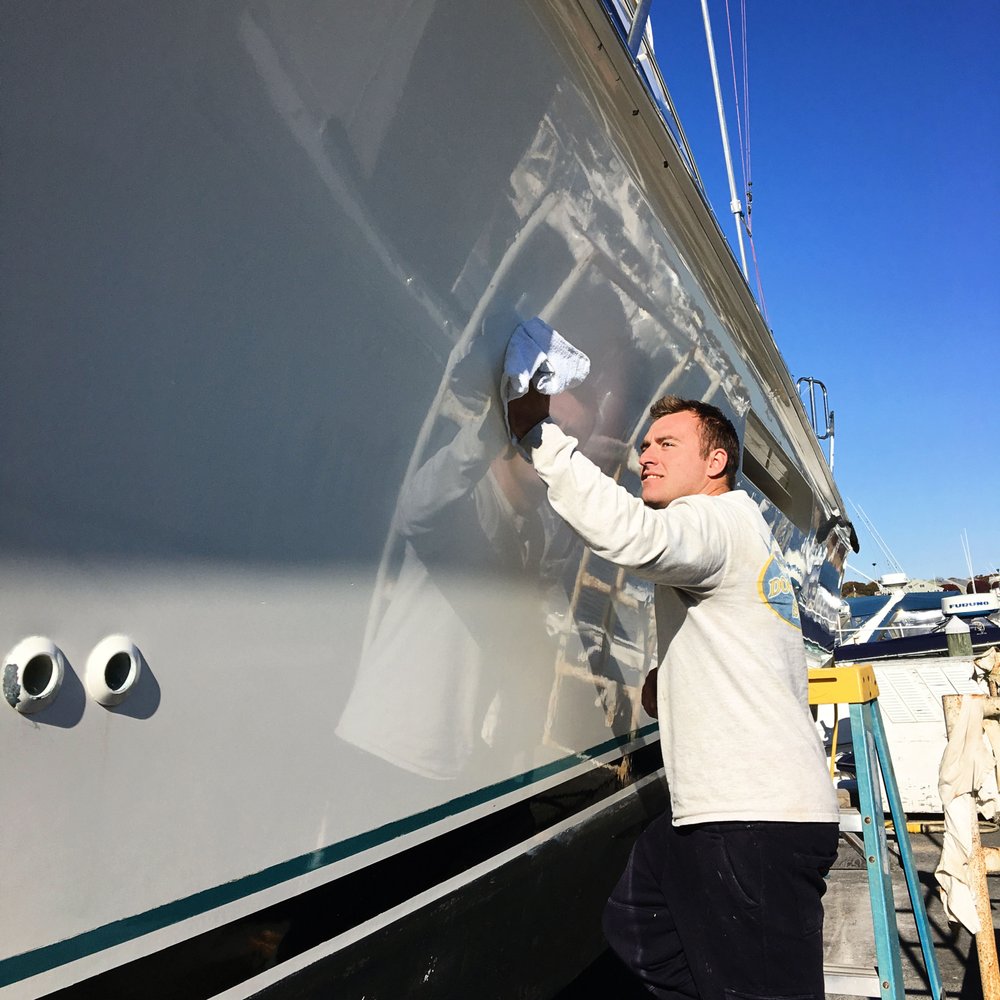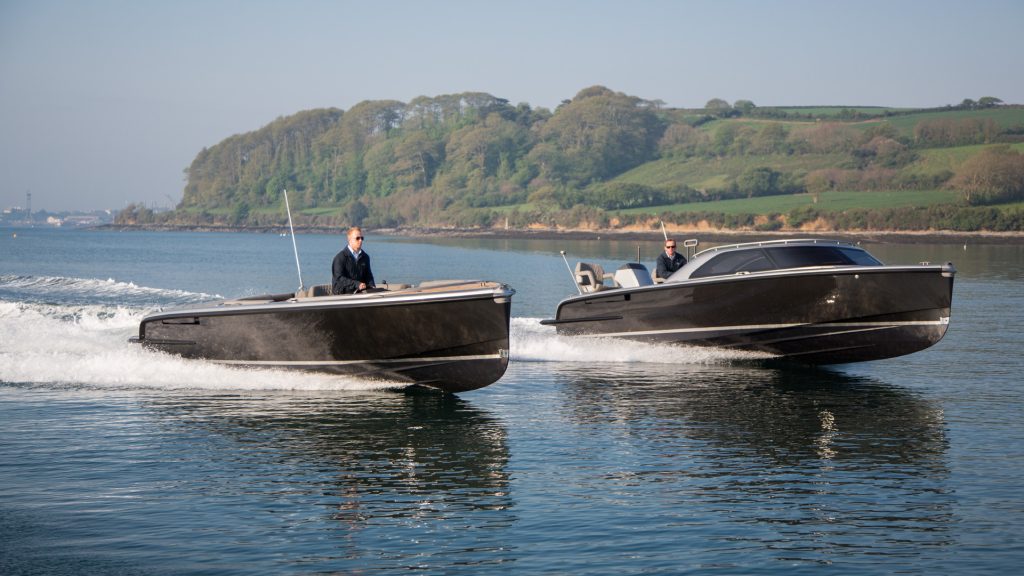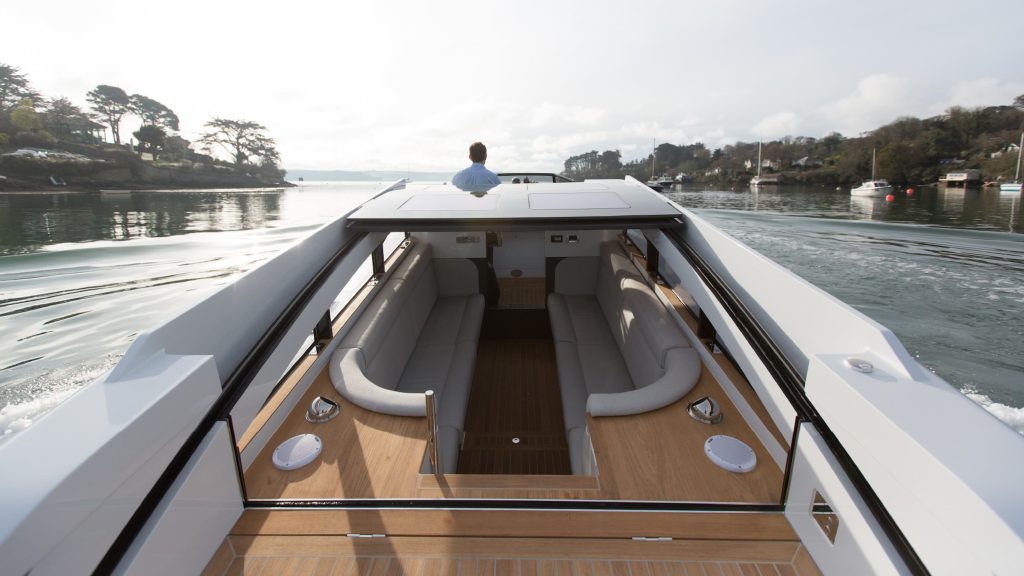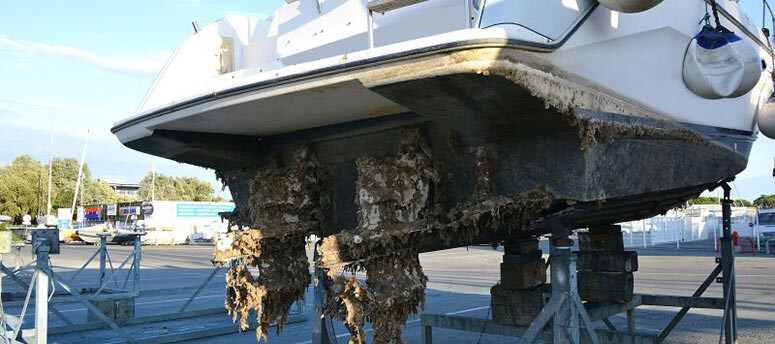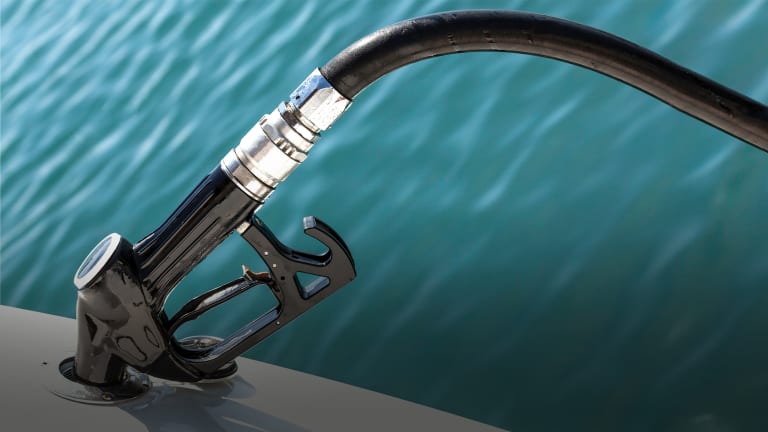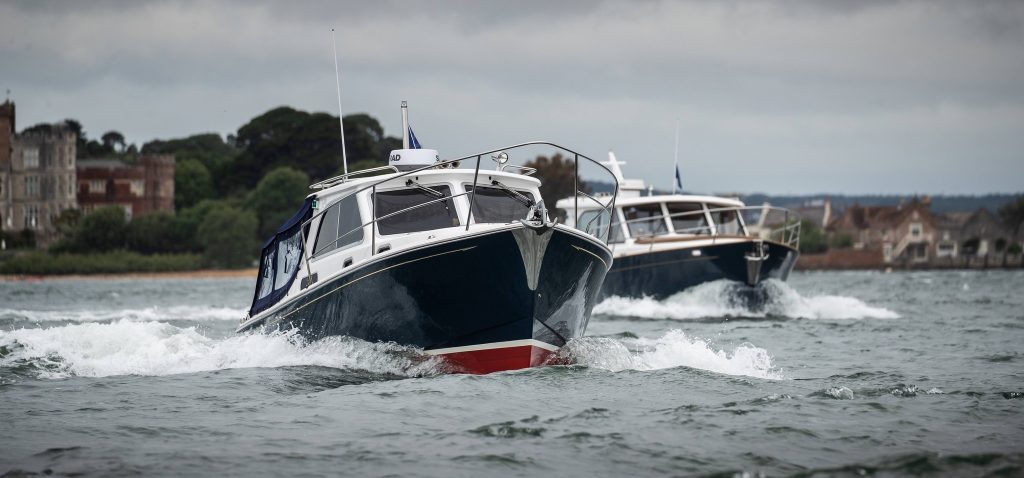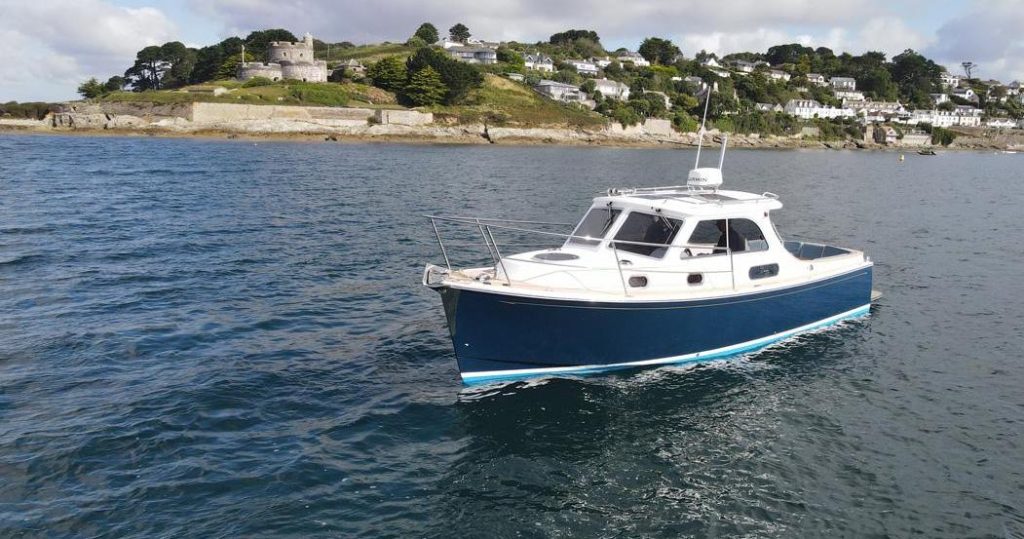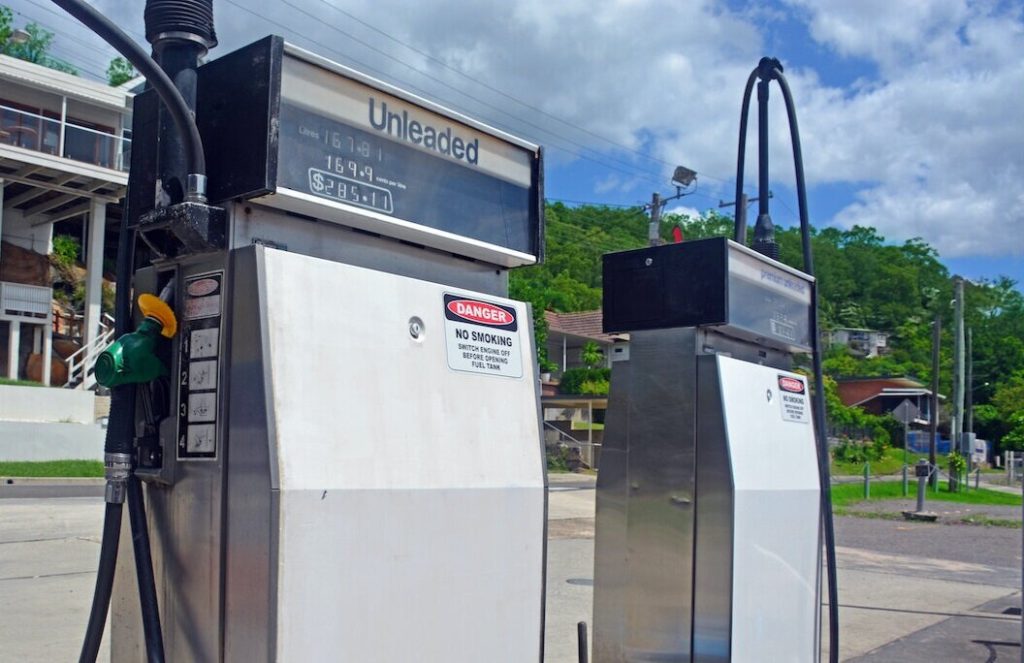“A Serious piece of kit”
AUDIO TRANSCRIPT
This is a 2007 Hardy 50. Now, this is a rather specialised boat. This is a boat not for somebody who says, “I fancy going boating this weekend, what’s the weather like?” This is a boat for somebody who says, “I fancy going boating this weekend, so I’m going.” Because this is serious heavy weather, offshore bruiser. This is the kind of boat that just punches through anything. It’s 25 ton of trawler yacht and it’s a rather serious piece of kit. So we’re going to go on board and I’m going to do the full tour. Show you what I mean by this boat.
Credits: Nick Burnham
AUDIO TRANSCRIPT
Now the first thing to say about this boat is, it is a semi-displacement hull. Now what that means is rather than the planing boat that sort of bounces across the surface which is very efficient and very fast or a displacement boat that just goes very slowly through it, this sort of splits a difference, so it goes through the water rather than bouncing over it but it still has some serious performance.
“It is a semi-displacement hull…it goes through the water rather than bouncing over it.”
And that is the steam train. Do you want to see the steam train? Of course, you do. Who wouldn’t? Look at this! We’re down in Kings Worthy at the minute and there goes the steam train, that’s beautiful! See if I can zoom in a bit for you, fantastic! If you’ve seen my video of the beautiful house in Kingsway, that’s a steam train that goes right past it. Shall we get back to boats? Okay, Hardy 50.
So semi-displacement hull, what that means as I was saying is rather than skimming across the surface like a planing boat which means that, when it gets rough you tend to sort of bounce a bit unless you slow down. With this, it just powers straight through it. It’s a wetter ride, it throws a lot of water around but it’s a much softer ride. So pilot boats, lifeboats, that kind of thing, they’re generally semi-displacement boats. It gives you performance and it gives you sea-keeping capability.
INTERIOR
So let’s go on board. This is of course going to be every area. And I think we’ll start on the inside and we’ll work our way out. So you’ve got these sliding side doors, very much a troll yacht feature rather than the cockpit at the back and then the sliding patio doors. And when we come inside, you start to get the vibe of this boat straight away with these serious helm seats. So these are suspension seats, you can see the suspension units underneath and again, it’s all about softening the ride when you’re punching through some serious heavy weather.
We’ve got big Pantograph Wipers, you’ve got instrumentation across the top and then your main screens are here, twin VHF radios on this one as well. She’s got a balanced stern thruster. I think they’re hydraulic on this one as well rather than electric which means you can control the thrust. Your throttles and shift levers are here and your view out of the front. Well, that looks like that.
There’s another sliding door over here on the port side. And the other thing you have in here which you don’t often see is an internal staircase up to the flybridge but you will of course be looking at that when we go outside of the boat. But let’s go through the interior first of all. So this is like a little dining area. You can put stalls around here if you want to sit all the way around it. And then after that, you have got the saloon. That’s very traditional with this dark blue and the teak everywhere and everything’s super solid and it feels a very serious little ship.
“There’s an internal staircase behind the cab seats up to the flybridge…so you can get up and down without going around the outside of the boat”
Down here [saloon entertainment unit] you’ve got things like the bar area, in places like this. There’s a TV that pops up, that’s in there. Then a massive seating all the way around, so very cosy, comfortable spot to wild away an evening.
Now we’ll head to the back, first of all, I think and then work our way forward because this is an aft cabin configuration. That means it’s got a raised deck out here (again we’ll see that better when we go on the outside of the boat) and that gives you this, it’s a full beam master cabin right across the back of the boat and what that means is that you’ve got windows all the way around that are open. Masses of headroom as you come all the way around this cabin. In fact, it doesn’t feel like a cabin. What this feels like, is more like a bedroom. So again it’s about the serious ethos of this boat. It’s the kind of boat you can go away not just for a weekend or a week, you could go away for six months if you wanted to and the weather wouldn’t be stopping you unless it was really seriously rough.
This door [master cabin main door] closes, a little catch-up there. And then you’ve got things like wardrobes and storage and that kind of thing, so that’s storage in there [behind master cabin main door]. Wardrobes from factory over on this side [storage area next to the TV], there we go.
There’s a TV in here as well, there’s a lovely clock and barometer they put up here [above TV]. This of course has its own ensuite. So the loo in there, and the sink and the shower, very nice, very nice indeed. A little dressing area on this side of the boat. That’s a stool that you can put up to go around that dining area gets a bit of extra seating if you need it. Great cabin!
Good, let’s press on. This is your inverter system so you can run 240-volt systems off of the batteries and then this [stairs] of course takes us back up to the saloon and this time we’ll head all the way through. Oh, I’ll just show you this [glass cabinet] actually, as we’re going past because this is the AV equipment. So it’s got satellite TV on here that’s the top one, so that’ll work wherever you are, the DVD player on here and stereo and so on.
And then we’re back through the wheelhouse and down on the lower deck forward, you’ve got your galley, it’s a nice size you can tuck yourself into it. When the weather’s a bit rough and you’re out at sea, you can still use that if you drop the speed back a bit so you’re not throwing around.
You’ve got an oven and grill, you’ve got a full burner hob, there’s a microwave built in over here, and the fridge is on this side. Why do I always open the fridge? I know what a fridge looks like, never mind open the fridge and we shall. In fact, there’s a second fridge I didn’t show you just up here. That fella that’s propped open over there, that’s a top-loading fridge for drinks and that kind of thing.
Now what’s opposite the galley, rather unusually again, is this sort of little navigation station. Oh, there’s a steam train going past. A little navigation station there or a desk to do a bit of work, you can put a laptop on there if you wanted to tuck yourself away. Again, it sort of harks back to the serious nature of this boat.
“It’s got 3 cabins with one day heads and two ensuites.”
And then your guests, well, they are up here [second cabin]. These are v-berths and you’ve got windows around this one and a big opening hatch up above with a sliding screen to give you a bit of privacy and cut the lights out if you need it. Wardrobe in here of course and storage, like so. And this has its own ensuite, so that [ensuite] is in here and it has the wraparound shower screen. So that fella here [wraparound screen] pulls around, so you don’t have to get everything wet when you’re having a shower. Excellent!
Now let’s go on back a bit further because it gets quite interesting down here [lower deck forward]. Because what you have behind this nav station is the third cabin. You probably wouldn’t have got a room like this but you could of course and if you did, that’s probably where they would sleep or otherwise, it’s great for kids. And in fact their adult-size berth, so of course, you can put adults in there. If you’ve got six of you on board, that’s where two of you would sleep. And then again you’ve got bits of storage about the place, hanging locker in there for example and then an opening hull window just on the side. It’s a decent little cabin actually, standing here as you come in. Very good!
But it goes further back again because behind this door [second cabin] is the day heads. And in fact, that’s also what’s classed as a wet room which means, again harking back the serious nature of this boat, you’ve been out punching through some big waves, got all your skins on, that sort of thing is pouring the rain, whatever it might be, you can put them in here and they drain down into the floor. So it means you can dry stuff off in there.
And then if we come on through, again we will find…looks like a little utility room, really. So you’ve got circuit breakers in here, you’ve got more storage in here, that’s the water heater (that silver fellow) and on the other side, there is a washing machine and a dryer and then through this watertight door, engines. Now, these are a pair of MAN R6 800s. Now they’re the biggest engines that Hardy ever put into these boats.
“These are a pair of MAN R6 800s…the biggest engines that Hardy ever put into these boats.”
In fact, these engines are the very last ones that got these. And some of these displacement boats generally, you normally find speeds of about sort of 20 knots, maybe a bit more. This one pushes onto 30 knots of these engines which is impressive for a boat of this type.
Let’s come right on in. Case you’re wondering what this fella on the floor is, that’s just a bar heater that you only keep so that when the boat’s left for a long time, you can keep a little bit of warmth in here and keep everything nice and as you can see it works because this is a 2007 boat. And look how clean it is. That’s a generator, so that gives you 240 volts when you’re away from the marina, and the fuel tanks are on the outside, you can see them wrapped in silver and these great big engines. It is a serious bit of kit.
Okay, let’s go and take a look around the outside because that’s pretty interesting too. Just close that door [watertight door] and then we’ll head on out and around.
So this is back to the lower deck forward, that’s that forward cabin, that’s the galley and these steps take us back up onto the main deck. And this time we’re gonna head back outside where we came in and take a walk right around the decks and then up to the flybridge. So I’ll just slip my shoes back on.
“This boat pushes onto 30 knots…which is impressive for a boat of this type.”
I love all this silver teak and look how high these rails [starboard side] are, they’re absolutely pretty much waist height and you’ve got these deep wall walks down here [under the rails] again, it all comes back to the serious nature of this boat. Up here [bow], there is a massive anchor chain locker, down in here. Don’t know whether you can see that very well. And then a big anchor winch on the front and it’s got two roller systems, so you can put a warp through onto this side and warp it onto that drum if you want to. We’ve got chain on this side, of course. And that’s the view looking back. A serious bit of kit.
Let’s go on this side [port side]. Again, these very high rails. And again the steam train. All right, it’s lovely down here. Now, this big dome you can see at the back, that is the satellite receiver for the TV system. So that’s got a little dish inside that will turn and spin and keep locked onto the satellite so you can watch TV. And if we come right to the back, these things here like rocket launchers, those are your fenders to drop into. And you have a bathing platform right at the back. So it steps down here, onto the platform to go swimming or if you’re coming on a dinghy for example if you’re out on a mooring, that’s where you get on board.
These [windows on the stern side] are the windows from that aft cabin and if you come right around here [right side of stern], you’ll notice that there’s a whacking great crane on the back and that is to lift this tender or off the boat deck. So there’s a really big tender and it’s locked down super solid on the boat, so you can see you’ve got these big tie-down straps here and the same at the back. So that is not going anywhere even when you’re in rough weather. And if we can step up onto this deck, the life raft is here where it is instantly gettable and then you’ve got this sort of…it looks like a funnel but it’s actually a mask for things like radar and so forth. In fact, we’ll see that a bit clearer when we go further up.
These are steps, I think there’s a side boarding step so you can drop those in on the side of the boat to get on and off. Then these steps take you up to the flybridge. Now there’s normally cushions out here [flybridge seating]. This boat’s not in use at the minute, the owners aren’t around. So there are blue cushions that just put down onto here [flybridge seating], they’re inside out of the way on here so you can sit all the way around the back. And then underneath here [upper helm], are the helm seats and the instrumentation and steering wheel and so on. You can see where that is, here. And another seat just there [right side of upper helm].
And that’s that door [left side of upper helm] I mentioned those steps that come up from inside, that’s where you would appear. So you can get up and down from the lower helm to this helm without going around the outside of the boat if you want to. Again, great for rough weather. And that’s the view out over the front. Brilliant!
Let’s look here, so it’s a Bimini top. So that [bimini top] will fold forward and give you shade up here [flybridge] if you want it and again that mask that I was mentioning where we can see things like the Raymarine radar scanner, that big white fellow up there that’s actually a radar reflector. So that’s so that other boats can pick up very easily.
What else have we got going on up here? TV antenna, that is the antenna for the GPS and then these are aerials that you can see up here and that little fella spinning around on the top and with the little wind vane thing, that’s I think I’m going to pronounce this right, Anemometer.
That’s an Anemometer. I think I pronounced that right, I’m sure you’ll tell me if I’ve not.But what that is doing is it’s giving you wind speed. So that thing spinning around is measuring wind speed and then the little wind vane on top is direction and so it can display that down at the lower helm or this helm so you can see what’s happening with the wind. Very important to know about when you’re berthing.
“There’s an Anemometer at the flybridge…giving you wind speed… so you can see what’s happening with the wind.”
SUMMARY
So that’s it! That is the Hardy 50, a very serious boat. In fact, that’s a Category A so it’s not the usual Category B offshore that you see on this size boat. It’s Category A Ocean, so it’s the highest category there is for seakeeping. That’s a very serious piece of kit. So I hope you’ve enjoyed that one. Let me know what you think in the comments. It’s something a little bit different and a pretty special boat, I think. Thanks very much for watching and just talking about steam trains and things, now you can see it…there’s a steamboat going up the river. If you’ve not been to Dartmouth, you should come down and see this stuff, that is beautiful. Right now (don’t know where we can pick this up) we’ve got a steamboat going up that side and in the steam train you can hear chucking away up there. Absolutely beautiful! Thanks very much for watching. Take care! Catch you on the next one bye-bye!
The Hardy 50 is just one of the many impressive models in the Hardy Motor Yachts range. For more information on the other range, check out the Hardy 42 Hybrid review and YouTube review of the Hardy 65DS by influencer Jack Haines from Motor Boat & Yachting. To see the full list, here’s a complete overview of the Hardy range. If you believe this is the type of boat you’re seeking, please don’t hesitate to give us a call. If you want to know more, check out Aquaholic’s review on the Duchy 35, Duchy Sport, and Duchy 27 – three of the magnificent models in the Duchy Motor Launches range.
Call Now